Jennifer Crusie's Blog, page 205
July 6, 2017
How Unsympathetic Can a Protagonist Be?
There’s something that’s been bothering me for years. (I can carry a worry longer than anybody. I am the Olympic gold medalist in worry and guilt carrying.) So I thought I’d throw the question out here and we could talk about it. I don’t need anybody to tell me I was right or wrong, it’s a judgment call. I’m just trying to get some clarity on the issue.
I had a student who was a very good writer in one my (many) romance writing classes. She turned in the first scene for her novel and it was brilliant, fantastic scene setting, great characterization, vivid action and dialogue. And I loathed her protagonist, even though I should have liked her because she was sharp and strong and determined and active with a great goal: She wanted to get out of her one-horse town and go somewhere else for a good reason. So what was the problem? She was dealing prescription drugs.
The book opened with her putting pressure on a kind of sad sack guy to get her more pills to sell, and he was resisting, telling her his cop brother would kill him if he went back to doing that, that his brother had finally gotten him clean and straight, but she’s determined to get out of town and she’s really putting the screws to him when his brother walks in and confronts her. Okay, I’m actually good with all of that in literary fiction or in a noir where I’m not supposed to identify with her, and I should mention that this was years ago before the opioid crisis was getting the attention that it is now. And I really don’t trust my own instincts on this because I know too many people who have addictions to prescription medications and who are making their own lives and the lives of the people who love them absolute hell. So, huge bias here. But the final trigger for me was that this was a romance novel, and the heroine and the cop were going to end up together.
What I told her was that I didn’t think a drug-pushing heroine would work in a romance novel. I think I suggested she write it as literary fiction, but I don’t remember for sure. She said that it was just pills so it was no big deal. I tried to explain what “just pills” can do, but she was angry and she left the class. Which means I failed her utterly because it’s none of my damn business what my students write, only how they write it, and even that is up to them, I’m just there to point out weaknesses and teach theory and its application. I can’t get past the feeling that I screwed that one up. But I’m not sure I was wrong.
Here’s my theory about protagonists: They don’t have to be likable, but they do have to be fascinating and, I think, admirable in some way, I think readers have to want to spend time with them, get involved in their struggles. I think you can have a hooker as a protagonist, a conman, a thief, maybe even a murderer depending on who and why the character murdered, but I think you have to stack the deck so that person is not a predator. That is, your thief is Robin Hood, your murderer kills bad guys (hello, Dexter), your conman fleeces only people who deserve to lose their money. Leverage was pretty much built on the idea that bad people doing good things are fun to watch. I think once the protagonist begins to prey on people, hurt people, for his or her selfish ends, the story becomes unreadable, no matter how great the writing is.
But I also know that’s in the eye of the beholder. There are a lot of people who do not like Davy Dempsey because he’s a crook. I can understand that, that’s not their story. But it’s different when you’re a teacher because it doesn’t matter if it’s your kind of story or not, you do not mess with the story itself. Which is why, although I still feel that the pill-pushing protagonist was not going to work in a romance (opinion, not fact), I also still feel that I failed that student.
I’m not asking for people to tell me I was right (feel free to tell me I was wrong, though), I’m just trying to figure out what a too-unlikable protagonist is. And determined to never critique a protagonist again in the future. Argh.
What do you think?
SaveSave
The post How Unsympathetic Can a Protagonist Be? appeared first on Argh Ink.

This is a Good Book Thursday 7-6-2017

Yes, I know down under it’s chilly, but trust me, up here we need fans. Global warming anybody? Good day to stay inside with a good book. Got any recommendations?
The post This is a Good Book Thursday 7-6-2017 appeared first on Argh Ink.

July 3, 2017
Ben Aaronovitch and the Rivers of London
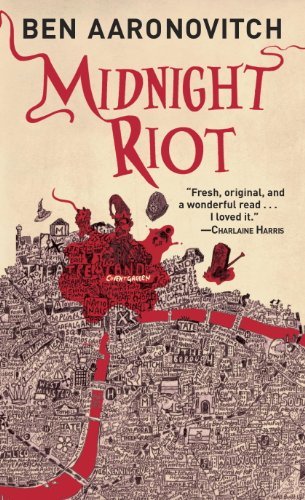 Suppose you’re a new constable in the London police force, one Peter Grant, and suppose you’re at the scene of a horrific murder, and suppose you run into the only witness, and suppose that witness is a ghost. Reporting that leads to you becoming attached to the heretofore secret branch of the Met for supernatural crime, manned by one very old inspector named Nightingale (born 1900), who doesn’t look a day over sixty and appears to be getting younger, and moving into the old mansion that houses that supernatural branch where you’re taken care of by a hollow-eyed, black-haired housekeeper named Molly who has too many teeth and a taste for red meat and where you learn that all the waterways of London have their own goddesses, including the dangerous Lady Tyburn and the impudent Beverley Brook.
Suppose you’re a new constable in the London police force, one Peter Grant, and suppose you’re at the scene of a horrific murder, and suppose you run into the only witness, and suppose that witness is a ghost. Reporting that leads to you becoming attached to the heretofore secret branch of the Met for supernatural crime, manned by one very old inspector named Nightingale (born 1900), who doesn’t look a day over sixty and appears to be getting younger, and moving into the old mansion that houses that supernatural branch where you’re taken care of by a hollow-eyed, black-haired housekeeper named Molly who has too many teeth and a taste for red meat and where you learn that all the waterways of London have their own goddesses, including the dangerous Lady Tyburn and the impudent Beverley Brook.
That’s the start of Ben Aaronovitch’s Rivers of London series that includes six novels (so far), a novella, and a series of graphic novels. It’s not Harry Potter for adults, it’s much more than that as it draws on history and mythology and sociology and computer science, so maybe it’s for Harry Potter fans who thought the books would have been better with more sex, violence, diversity (Peter’s mixed race), and in-depth discussion about the practical theory of magic. There’s some X-Files in there, too, and a dash of Supernatural, but mostly the Rivers novels are their own things, endlessly inventive and compelling. The stories are always complex, which means that I need to reread each one to completely understand what’s going on, but that’s okay because they give me a marvelous world full of fascinating characters I always want to read again.
However, if you want your Big Bad defeated, you’re going to get frustrated because there are several of them, and they’re still roaming around free at the end of the sixth novel. I think there’s a limit to how long this battle can be stretched out—Peter does solve each mystery in each book, he just can’t catch the bad guy—so I’m hoping it gets resolved in the next novel, whenever that comes out. The novella is excellent if unsatisfying—it reads like an unfinished novel with an abrupt finish—and the graphic novels are not good. But the novels are damn good reads.
Therefore, I highly recommend the Rivers of London. And right now, Midnight Riot is $.99 on Amazon, probably because they know if you read one, you’ll go head first into all of them.
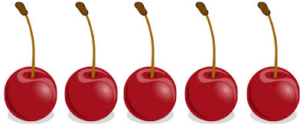
Midnight Riot in US/Rivers of London in UK, 2011:
Peter meets a ghost and Nightingale and Molly and rescues a dog, Toby, and tangles with the beautiful Beverly and the dangerous Lady Ty, while working with Lesley, a fellow officer, to solve supernatural murders. One of the most intricate and convoluted plots I’ve ever read—I really didn’t understand half of it until I read it again, didn’t get some of the rest of it until the third time, and I’ll probably grasp more the fourth time—it’s still a great story with a wonderful protagonist and an antagonist like no other. The world-building is marvelous, not just establishing modern London but also the intricate social structure of the supernatural world, especially the Thames family, aka the warring Rivers of London, and the different magic spells and rules that the very special branch is armed with. (It’s helpful if you’re familiar with Punch and Judy shows, too.) The ending is brutal, but the sense of justice is strong.
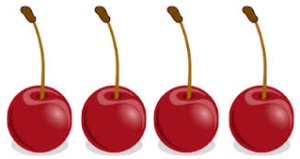 Moon over Soho, 2011:
Moon over Soho, 2011:
Peter gets entangled with a jazz-loving woman named Simone and spends a good chunk of the book naked with her, which made me think less of him because there was nothing about her that was intelligent or interesting (until the end), and nothing about their relationship that was anything but sex, but that may be because I’m a hetero woman; a cheerful, pastry-loving sex addict is probably many readers’ idea of a good time. But he’s also trying to help Lesley in the aftermath of the last book, and he’s still dealing with the Rivers of London, those gods and goddesses of the waterways, and the crimes are once again complex and never boring. Plus this time, his mom and dad are involved, which means jazz. Even Simone is crucial in the end, so I’ll stop complaining about her. Also good: the introduction of a series heavy who’s a real bastard: the Faceless Man.

Whispers Underground, 2012:
A young man is killed in the Underground, and Peter and the rest have to go down even farther, this time into the sewers, to discover who killed him, while still chasing the Faceless Man from the last book. A minor subplot is the most fun: Abigail, a thirteen-year-old girl with attitude who lives in the same housing block at Peter’s mother, tells him there’s a ghost on the train tracks. Abigail isn’t impressed by anyone, but at the end, she agrees to help out with unseeable that she can see, setting up a great new addition to the Folly Team.
 Broken Homes, 2014:
Broken Homes, 2014:
Something odd is happening in a housing project with a very strange design, and Peter and Lesley and Nightingale and the hijab-wearing Officer Sahra Guleeb are on the case, which involves strange deaths, stolen magic books, a tree nymph, and a lot of explosions, the biggest one at the climax. The usual great cast of supporting characters and evil antagonists are present and accounted for, and Peter faces down the Faceless Man at the end. Needs more Abigail, but otherwise great.
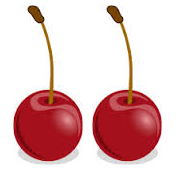 Foxglove Summer, 2015:
Foxglove Summer, 2015:
Two elementary schoolgirls go missing in the country and Peter is sent down to help find out why. I think one of the reasons I like this book the least is because it’s untethered from the core group; Peter makes new friends and Beverley Brook shows up, always a good thing, but the Folly family is shattered, and the solution to the mystery this time is so far out that even though the characterizations are once again excellent, the plot seems weak, especially given an ending that comes out of left field, making no sense given the logic of world, and ends so abruptly that I was surprised when I turned the page to see there was no more left I’ll stick with the series, it’s too good not to, but this wasn’t great. Also the Big Bads who are still wandering around from the last three books? Must be taking a vacation since all they do is text.
Body Work, 2015, and Night Witch, 2016 (Graphic Novels) 
I had once thought about doing a novel (or two) and then doing the sequels as graphic novels. These two graphic novels convinced me not to do this for a many reasons, but the big one is that you don’t switch genres in the middle of a series without seriously screwing with reader attachment. This is not the way I see these people looking or moving, so it feels to me like an imposter story. Add to that, the stories are weak, the art is not good, and neither of these uses the graphic novel format as its own language; instead they’re just illustrated short stories. I won’t be buying any more (there are other collections), and they don’t seem to be necessary to understand the novels.
 The Hanging Tree, January 2017
The Hanging Tree, January 2017
Lady Ty calls in a promise and Peter and Nightingale get involved with a simple drug overdose that quickly becomes The Big Bad is Back, which means it’s not that damn simple. No Abigail, which is just wrong, but enough Beverley and Guleed and even more new characters I’d like to see again to bring me back for the next one. By this point, the Rivers books have built a complete and coherent world, populated by wonderful characters, even if the plots require re-reading to figure it all out.

“The Furthest Station” (novella) June 2017
Ghosts, kidnapping, a baby river god, and Abigail in a major role at last. The only drawback is that it’s much too short and ends much too abruptly.
Seriously, if you like mysteries with some scientific supernatural thrown in, read The Rivers of London books.

SaveSave
SaveSave
The post Ben Aaronovitch and the Rivers of London appeared first on Argh Ink.

July 1, 2017
Cherry Saturday 7-1-2017

Today is Canada Day.
Canada has maple syrup and Justin Trudeau and many Argh people.
We love you, Canada. You’re so . . . sane.
Also: HAPPY 150th BIRTHDAY! You don’t look a day over 100.
SaveSave
The post Cherry Saturday 7-1-2017 appeared first on Argh Ink.

June 29, 2017
Good Book Thursday 6-29-2017
June 28, 2017
Questionable: How Do You Do Brainstorming on the Computer?
Michelle asked:
“Tech geek question, but what program did you use to make the schematic?”
Zengobi’s Curio. HUGE fan of Curio, I use it constantly. Unfortunately only for Mac and not yet on the iPad. Must go harass them about that. Curio does ten thousand things, and the website does a good job of telling you all about them. I use it for about as many things, but when it comes to writing, I have two Curio files for each book: Notes and Collage (aka Visual Notes).
The notes are the big deal. I doodle on graph paper, but when I get any kind of grasp at all, I go to Curio because I can type in notes and then move them around (huge failing for graph paper). Plus I can color code them, change the colors with a click, add photos and drawings and anything else I can drag and drop on a computer. And all my notes are in one place, like a huge file folder of goodness:

See that list to the left? That’s my list of sections: First Act, Second Act, Character Arcs, etc. See the little gray triangles to the left of the list? If I drag a page on top of another page, they stack: Look at the fifth one down; see how there are six pages under that? When I click that arrow, they fold up into the top page so I don’t have to scroll through dozens of pages and I can keep similar pages together. Then look at the top of the window to the right: See that square with the arrow pointing up that’s labeled “Share”? If I click on that, it gives me the option to export either a single page as Text, RTF, HTML, Image, or PDF, OR to print or mail it. If I pick Image, it gives me the choice of JPG, PNG, or PDF. And I can also choose to export the whole magillah as any of those, so I could have PDF of the entire project. And the choices within the program are vast and varied. Any color, and font that’s on my computer, any line width, it’s all customizable. There’s even a graph paper background (be still my heart) that you can customize so that the graph is any spacing in any color, with snapping or without.
After that, the collage is easy. I manipulate the images in Acorn because Curio isn’t a graphics program, but then I usually drop them into Curio because it organizes everything for me, so instead of having pieces of collage all over my hard drive, they’re all in one Curio Folder:

It’s a shame it’s only for Macs, but if you have a Mac, you really should invest. It’s second only to Word in my Essential Programs list (and Acorn pretty much comes right after that as a great, cheap, easy graphics program).
SaveSave
The post Questionable: How Do You Do Brainstorming on the Computer? appeared first on Argh Ink.

June 27, 2017
I Have a Plot (No, Really), REVISED
So after much cogitation and wailing, I have a plot for Nita. It looks like this:
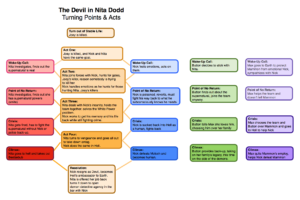
The yellow boxes in the center are the first turning point (the turn out of the stable life) the four acts and the resolution/new stable life.
The other boxes are the PoV characters’ plot turning points, red for Nita, blue for Nick, Green for Button, and purple for Max.
It’s pretty, isn’t it? More than that, it’s useful because it’s based on these assumptions (my assumptions for my plotting, not rules, not industry standards, just Crusie’s Theory of Plotting. WARNING: Spoilers abound below.
Characters begin in a stable life that they’re immediately thrown out of (first turning point).
They will cling to their old stable lives until something happens that’s so revolutionary that they must change to adapt to the new normal (second turning point/wake-up call).
They will try to incorporate the new normal into the old normal, adapting as they go but still under the assumption that they can go back to where they were until something happens that’s so revolutionary that they realize they’ve changed too much to ever go back: Everything is different now (mid turning point/point of no return).
They will pursue their goals with new energy, coping with the new normal and their new future, trying to establish secure footing when something happens that’s so devastating that they realize they’ve lost their battle unless they do something radical, something they’ve never done before, something they’re not sure they’re capable of but have no choice but to plunge into: (penultimate turning point/crisis/going to hell).
The last act is their Final Push, the do-or-die obligatory scene with the antagonist, the Great Battle and the final turning point (the climax) which will thrust them into a new stability (the resolution).
Each of those turning points is represented by an event, something that happens that affects the characters enough that they turn and in so doing turn the plot. Joey is killed, and Nita and Nick investigate which leads to the wake-up call: Nick kills Rich to save Nita, who now knows the supernatural is real. Galvanized by the knowledge that Nick is getting closer and Nita now is fully read in to the situation, the big bad speeds up poisoning Nick, which leads to the point of no return: Nick can’t remember anything after 1502 but he knows he’s missing something and Nita now has to take over as Hell’s lead investigator. They both keep fighting, at which point the Big Bad created the crisis point by sucking Nick back into Hell as a vulnerable human, thinking they’ll be weaker fighting alone (and forgetting that unlike other Devils and Devil Spawn, they have friends).
These turning points pull the story together because they pull the characters together: Nick and Nita meet because Joey dies, but they’re pulled together because they both want to solve his murder. Their attempts to do that bring Button and Max into the story. Nick and Nita begin to bond because he kills Rich to save her, and they assemble a team that Button and Max will be drawn into in Act Two. When Nick is kidnapped back into Hell, that forces all four characters to cross boundaries in an effort to save him and the island. Each turning point raises the stakes and deepens the investment each of the characters has in the fight and in each other, and sends them into the next acts as new people fighting a harder fight. As another writer once said, each turn of the screw tightens the plot.
The key to pulling it all together is that those individual character turning points roughly correspond to each other, usually in response to the same event. In the first turning point, for Nick and Nita it’s the showdown with Rich that convinces Nita that the supernatural is real and forces Nick to the realization that he’s having emotions again, since he killed his best witness to protect Nita. Button’s comes when she agrees to have lunch with Lilith to get information out of her, siding with Nita against the police department. And Max’s comes when he sympathizes with Nick in the scene in the Pandemonium and begins to doubt his boss. Button’s and Max’s TPs aren’t directly in sync with the Nick and Nita’s TP, in part because their lives aren’t that closely aligned to Nita’s and Nick’s yet, but they’re tied to it by the same plot line: trying to solve the supernatural crime on Earth. That’s a loose tie, so I have to make sure the next one is tighter. Which the midpoint TP is: The event is Nick succumbing to the poison and losing all memory past 1502, making the others step up: Nita accepts her powers and takes the leadership of the supernatural team; Button sticks with Nita even though she’s still in shock from learning the supernatural is real and has an inherited antipathy for demons; Max sees Nick vulnerable and doesn’t tell Mammon, trying to do the smart/right thing instead of what’s best for his boss.
The biggest gift of the individual character TPs is that it tells me what’s in the acts. Now I know exactly what character arc has to happen in those acts for those people and I can rewrite so that the actions they do create that arc.
I love turning points. They make plotting so much easier.
Due to requests, a larger mostly spoiler-free version. You’ve already read the first act so spoilers don’t count there. Clicking won’t make it larger, but if you can make the window larger in your browser, you should be able to read it.

SaveSave
SaveSave
SaveSave
SaveSave
SaveSave
SaveSave
SaveSave
SaveSave
The post I Have a Plot (No, Really), REVISED appeared first on Argh Ink.

I Have a Plot (No, Really)
So after much cogitation and wailing, I have a plot for Nita. It looks like this:

The yellow boxes in the center are the first turning point (the turn out of the stable life) the four acts and the resolution/new stable life.
The other boxes are the PoV characters’ plot turning points, red for Nita, blue for Nick, Green for Button, and purple for Max.
It’s pretty, isn’t it? More than that, it’s useful because it’s based on these assumptions (my assumptions for my plotting, not rules, not industry standards, just Crusie’s Theory of Plotting. WARNING: Spoilers abound below.
Characters begin in a stable life that they’re immediately thrown out of (first turning point).
They will cling to their old stable lives until something happens that’s so revolutionary that they must change to adapt to the new normal (second turning point/wake-up call).
They will try to incorporate the new normal into the old normal, adapting as they go but still under the assumption that they can go back to where they were until something happens that’s so revolutionary that they realize they’ve changed too much to ever go back: Everything is different now (mid turning point/point of no return).
They will pursue their goals with new energy, coping with the new normal and their new future, trying to establish secure footing when something happens that’s so devastating that they realize they’ve lost their battle unless they do something radical, something they’ve never done before, something they’re not sure they’re capable of but have no choice but to plunge into: (penultimate turning point/crisis/going to hell).
The last act is their Final Push, the do-or-die obligatory scene with the antagonist, the Great Battle and the final turning point (the climax) which will thrust them into a new stability (the resolution).
Each of those turning points is represented by an event, something that happens that affects the characters enough that they turn and in so doing turn the plot. Joey is killed, and Nita and Nick investigate which leads to the wake-up call: Nick kills Rich to save Nita, who now knows the supernatural is real. Galvanized by the knowledge that Nick is getting closer and Nita now is fully read in to the situation, the big bad speeds up poisoning Nick, which leads to the point of no return: Nick can’t remember anything after 1502 but he knows he’s missing something and Nita now has to take over as Hell’s lead investigator. They both keep fighting, at which point the Big Bad created the crisis point by putting out a contract on Nita and sucking Nick back into Hell as a vulnerable human, thinking they’ll be weaker fighting alone (and forgetting that unlike other Devils and Devil Spawn, they have friends).
These turning points pull the story together because they pull the characters together: Nick and Nita meet because Joey dies, but they’re pulled together because they both want to solve his murder. Their attempts to do that bring Button and Max into the story. Nick and Nita begin to bond because he kills Rich to save her, and they assemble a team that Button and Max will be drawn into in Act Two. When Nick is kidnapped back into Hell, that forces all four characters to cross boundaries in an effort to save him and the island. Each turning point raises the stakes and deepens the investment each of the characters has in the fight and in each other, and sends them into the next acts as new people fighting a harder fight. As another writer once said, each turn of the screw tightens the plot.
The key to pulling it all together is that those individual character turning points roughly correspond to each other, usually in response to the same event. In the first turning point, for Nick and Nita it’s the showdown with Rich that convinces Nita that the supernatural is real and forces Nick to the realization that he’s having emotions again, since he killed his best witness to protect Nita. Button’s comes when she agrees to have lunch with Lilith to get information out of her, siding with Nita against the police department. And Max’s comes when he sympathizes with Nick in the scene in the Pandemonium and begins to doubt his boss. Button’s and Max’s TPs aren’t directly in sync with the Nick and Nita’s TP, in part because their lives aren’t that closely aligned to Nita’s and Nick’s yet, but they’re tied to it by the same plot line: trying to solve the supernatural crime on Earth. That’s a loose tie, so I have to make sure the next one is tighter. Which the midpoint TP is: The event is Nick succumbing to the poison and losing all memory past 1502, making the others step up: Nita accepts her powers and takes the leadership of the supernatural team; Button sticks with Nita even though she’s still in shock from learning the supernatural is real and has an inherited antipathy for demons; Max sees Nick vulnerable and doesn’t tell Mammon, trying to do the smart/right thing instead of what’s best for his boss.
The biggest gift of the individual character TPs is that it tells me what’s in the acts. Now I know exactly what character arc has to happen in those acts for those people and I can rewrite so that the actions they do create that arc.
I love turning points. They make plotting so much easier.
SaveSave
SaveSave
SaveSave
SaveSave
The post I Have a Plot (No, Really) appeared first on Argh Ink.

June 26, 2017
Design/Originality/Craftsmanship
Many years ago, I was an art teacher, first at the elementary level and then at the junior high. At the elementary level, kids loved art, At the junior high level, tension set in. They came in afraid because it was a required class and they didn’t have talent. They were going to fail. They didn’t know how to be an artist. That first day, they’d look at me with varying degrees of terror and anger. We didn’t want this, I could hear them thinking. It sucks that you’re making us do this.
So I’d start out with, “Suppose this was a Spanish class. Would you feel awful because you couldn’t speak Spanish? Of course not, you’d be taking the class to learn that. And you’re taking this class to learn art. I don’t care if you’re talented or not, I just want you to learn the basics of design.”
But I could still see the tension, so I’d get to the part that was really worrying them: the grading.
“Every assignment I give you will get three grades: one on design, one on originality, one on craftsmanship.”
“For design, I’ll tell you exactly what I need you to do: repeat shapes to make a pattern, choose a color scheme, vary texture, whatever. As long as you use the design element as assigned, you’ll get an A in design. I don’t care how awful your work is, if you used the design element as assigned, you get the A.
“For originality, I’ll look for how different your approach is. Did you do a picture of a tree by a lake or did you draw flying hamburgers? Did you do orange pumpkins or purple pumpkins with red ribbon stems? How did you make the assignment new, different, yours. If you used your imagination, you’ll get an A, even if the project is a mess and you screwed up the design part.
“And finally, for craftsmanship, if you used your tools well and executed your design cleanly, if you respected what you were doing enough to do it carefully, you’ll get an A. Even if your design is all wrong and you drew Mickey Mouse, you’ll get an A in craftmanship.”
“Nothing there requires talent. I don’t care if you can draw. I just want you to learn the basics of design while using your imagination and treating your artist’s tools with respect.”
At that point, I could always feel a collective sigh in the room, thirty kids finally breathing again. And as we did one project after another, they didn’t just learn the basics of design, they learned that they really were artists, that they all had talents in different areas which meant that the fact that their work didn’t look like the kid’s next to them was a good thing, that creativity was expression, and that they could be even more expressive once they had the safety of a framework: Design/Originality/Craftsmanship.
I was thinking of that tonight, thinking of the Nita story evolving and the Gaiman Snow White story I read earlier this week and of how difficult it is to write a story, to juggle all the different aspects of writing and storytelling and I realized that it all goes back to Design/Originality/Craftsmanship. Know your structure and the theme that pulls it all together; swing wide and high within the structure, no limits to your creativity; and then revise it to be tight and strong with beautifully clear syntax, no unnecessary words to clog up the works, no grammatical or punctuation errors to spoil a reader’s attachment to the narrative.
So discovery drafting is about originality, but it’s also about discovering the structure you need, not to limit yourself but to support you as aim for the moon. It doesn’t matter that I look at this book and think, “It’s not even close.” Of course, it’s not even close. I’m still learning this story, but every step I take that brings me closer to the structure I need, every step I take farther outside the box labeled “Crusie,” every word I cut and phrase I polish, brings me closer. It’s not about talent. It’s about creativity and craft.
And design, originality, and craftsmanship.
(How long ago was this? The kids with me in my art classroom below are all in their forties now. I’m old.)

SaveSave
SaveSave
The post Design/Originality/Craftsmanship appeared first on Argh Ink.

June 24, 2017
Cherry Saturday 6-24-2017
 This is National Adopt a Cat Month.
This is National Adopt a Cat Month.
Actually any month is a adopt a cat month or a dog month or a ferret or rabbit or any other animals. Animals are good for you. Be good for them.
What’s new with you this week?
The post Cherry Saturday 6-24-2017 appeared first on Argh Ink.






